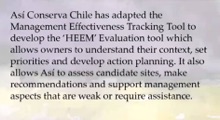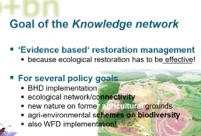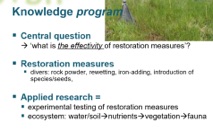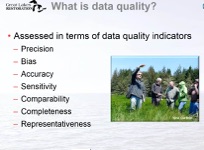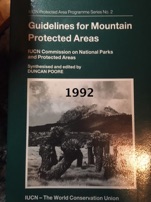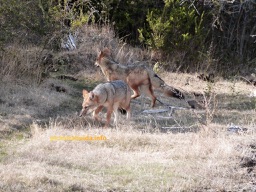
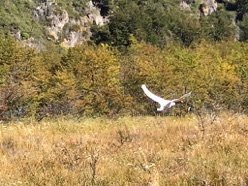
Goal 1. Restore, as “revive”: Restore optimal state of a network of biotopes impacted by anthropogenic destruction to reduce and prevent further nature and land (soil) destruction, and provide habitat for plants and animals.
Sub- and short-term goals:
-
• Wetlands revival;
-
• Erosion control;
-
• Regeneration of natural forest with ;
-
• Reintroduction of native trees;
-
• Restoration of the ancient forest burnt in 1939;
-
• Reduction of stress level in plants and animals;
-
• Restoration of optimal habitat for remaining native species.
Performance indicators:
-
• Effectiveness of spot restoration in an ever decreasing amount of live biomass on Earth;
-
• Value of the forest biotope, ecological quality of the forest. This value is used to assess the extent to which the forest constitutes a quality habitat for plants and animals. The diversity of woody species, structural diversity, amount of dead wood (habitat and food resource) are taken into account, as well as density of the biotope, level of filling of empty spaces ( = “amazing views”);
“Nature abhors a vaccum”, Aristotle.
-
• High survival rate of planted forest: the highest in the region;
-
• Emergence of native forest on valley floor; Ñirre and notro well established in areas that were bare;
-
• Level of synergies and autoregulation of the biotopes, independence from external factors;
-
• Observance of natural original structural conditions;
-
• Soil-related indicators, such as the level of soil sealing, amount of microbiota in the soil; restoration of soil buffering for flora and fauna;
-
• Development of bioindicator species: lichens, birds;
-
• Presence and development of key species, such as bats;
-
• Presence of seasonal birds, amphibians, and fish;
-
• Establishment of endangered animals and plants;
-
• Establishment of nesting birds;
-
• Presence of sphagnum moss in the wetlands
-
• Performance indicators for stress level in animals and plants, such as evidence of wildlife being active in daytime: due to anthropogenic stress and loss of habitat wildlife is moving to the night and to the mountains worldwide, an example;
-
• Natural surfaces the existence of which benefits from animal pollination;
-
• Evaluation of the part of active restoration ;
-
• Evaluation of the part of passive, spontaneous restoration;
-
• Applicability of landscape approach;
-
• Compare to an eventual situation of if the land were not bought for rehabilitation.
Natural site now:
-
• A functional and autoregulated mosaic of biotopes;
-
• Good natural tree regrowth on the valley floor (soil);
-
• Main forest family: native Nothofagus trees;
-
• Perfect synergies between planted, regrown and islands of old forest;
-
• Active and constantly increasing bird life;
-
• Wildlife: 3 families of foxes, pichis, occasional pumas and huemules (habitat repaired), bats (3 species), etc.
-
• Increase of insects after restoration measures: important, as post-fire ecological memory in insects is very low, it’s a sign of some rebuilding of forest resilience;
-
• Many native orchids - sign of rebound of the grassy part of the ecosystem;
-
• Functioning wetlands and pit bogs.
-
• Nature is taking its course, wildlife adopted the area, relations with animals re: shared forest are restored; a no-fear generation of wildlife is growing.
-
• Animals seen during daytime and down in the valley;
-
• Animals accepted us as factors sharing with them resources and food;
-
• Major progress in controlling erosion of ancient lake terraces; increased vegetative cover of slopes; reduction in actively eroded areas;
-
• Positive feedback of the ecosystem is transformed into either negative, or neutral feedback;
-
• Signs of auto regulation are visible.
Restoration evidence case studies.
Using birds as biodindicators of forest restoration progress.
Stressed plants let out ultrasonic squeals :

Evaluation
Long-term flexible monitoring is essential for the validity of a restoration activity.
Constant long-term vigilance is essential to make reforestation efforts successful.
Method:
Assessment of the effectiveness of a private and personal area-based legal project oriented at assuming the responsibility for respecting and protecting the rights of nature, and aimed at reporting to nature:
-
• Use of personal evaluation criteria and performance indicators for an assessment of 16 years of experience, applicable to this particular project, not necessarily replicable.
-
• Use of tools with proven effectiveness (guidelines, legal solutions, managerial tools).
-
• Prioritisation and complexity of indicators.
-
• Harmonised mix of quantitative and qualitative performance indicators, with preference for the later for this project; qualitative assessable successes, rather than quantitatively measurable.
-
• No baselines used: fast shifting baselines - a serious problem worldwide.
-
• Evidence-based decisions, with no need for scientific assessment.
-
• Evidence-based restoration and protection management: moving from trials and errors to using experience and assessing evidence.
-
• Main goals are detailed in some short-term goals, with responsibilities identified.
-
• Development of monitoring arrangements (main mistake usually made for this type of projects: no monitoring from the start).
-
• Use of back-casting technique, to avoid incrementalism: start at the vision, and ask how we got there.
-
• Avoiding: using a single reference site, focus on a narrow set of indicators.
Goal 3. Remember: defying the ecological amnesia, for the past and the future.
Without ensuring the future of the initial and necessary additional protective measures of a restored ecosystem, the project could be considered as abandoned.
Indicators:
-
• Extent of the natural history of the area, in particular of the chock of the anthropogenic destruction, unveiled;
-
• Level of integration of lessons from nature;
-
• Volume and quality of polymathic studies of past effective strict nature-protection solutions;
-
• Presence of signs of negative feedback of the socio-ecological environment (is the restoration able to reverse the general negative trend ?), as opposed to the positive, destructive, feedback;
-
• Predictions for the feasibility of long-term flexible monitoring, essential for the preservation of the successes of efforts of nature restoration;
-
• Predicted effectiveness for the future civilisation: restoration does not give immediate results, it takes decades or centuries;
-
• Future prospects for carbon absorption by the abandoned farmland;
-
• Material footprint, Jevons paradox;
-
• Consumption of certified organic food and self-dead wood.
Achievements:
-
• Development of working strategies for the goal;
-
• Development of observations and monitoring of sensitive areas;
-
• Development and installation of an advanced signposting in the terrain, reminding of the catastrophic destruction of nature by the recent colonisation;
-
• Increased sense of responsibility for and understanding of the reasons of the critically degraded nature of the region;
-
• Active participation in information exchange networks of privately-owned protected areas
-
• Promotion of private restoration and conservation as an effective tool of nature protection, overturning the disregard of private landowners as valuable and diverse allies, achieving significant success in saving land and nature;
-
• Effective and registered monitoring of the peace of nature: witnessing of recovery, comparative timeline photos, satellite and drone monitoring, 7 parcelas were set up to monitor rebound of the forest ecosystem, trap cameras;
-
• Long-term monitoring: must be about 30 year; 10 year minimum - depends on the habitat type; lter-europe.net
-
• Increasing the effectiveness of internationally or nationally, guidelines and assessments, developed a long time ago and forgotten;
-
• Record of experience of setting strict nature reserves for future when respecting the rights of nature are recognised as essential obligations by law.
Most successful in conservation have been so far privately-owned areas, for example Denis island, New Scientist 24.04.2010.
Goal 2: Protect from and for, save what is still possible.
Sub- and short-term goals:
-
• Reduction of anthropogenic intrusion;
-
• Reduction in intrusion of neighbours’ cows;
-
• Transferring stress from nature to its invaders: tourism, cattle proliferation, invasives species;
-
• Development of infrastructure;
-
• Protection of nature restoration successes;
-
• Protection of novel functioning biotopes;
-
• Short- and long-term legal protection: creation of a location-based, action-based and results-based legal watch programme.
Performance indicators:
-
• Level of restoration of friendly surrendering societal relation to land and nature;
-
• Amount of stress passed from nature to people and other anthropogenic factors;
-
• Changes in level of responsibility for anthropogenic nature destruction;
-
• Signs of culture of “do not harm” with regard of nature;
-
• Effectiveness as individual project vs. participation in associative arrangements;
-
• Level of privacy of the project, such citing of the project in the media, in particular social media, zero being the highest score;
-
• Effectiveness of the Red Cross principle: no interviews, no public declarations, durable in time.
-
• Level of protection of the autoregulation of the biotopes, present and in the long-term;
-
• Waste management efficiency;
-
• Reduction of polluting emissions;
-
• Effectiveness of refraining from action, when needed.
Successes:
-
• No encountering people off the trails;
-
• Fewer cows;
-
• Increased independence by developing own in situ seeds and trees growing facility;
-
• Working legal watch programme, including popularisation of some relevant legal information;
-
• Development and application of other legal protection measures, such as contracts on Real Right to nature conservation;
-
• Effective and working supporting structures, including sustainable independent energy sources, electricity from solar, wind and water;
-
• High level of personal involvement, self-imposed obligation of non-deterioration is effectively applied;
-
• La décroissance and sobriety are gradually replacing unrestrained consumption and “sustainable development”;
-
• Only tools (legal, managerial, operational), which effectiveness has been proven, are used;
-
• Demonstrated effectiveness of the protection hierarchy;
-
• Minimal mention in social or other media;
-
• The project is (almost) not mentioned as a tourist destination any longer;
-
• Good level of preservation of independent, without involvement in any type of associative arrangements, functioning, for higher effectiveness; Just because a forest is protected, doesn’t mean it won’t get logged
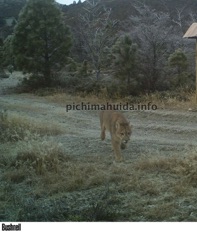


Examples of effectiveness evaluation work:
